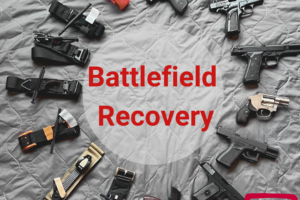
Smoke Hoods vs. Reality: Why Filtering Isn’t Enough in Life-Threatening Fires
- Posted by Mike Shertz MD/18D
- Categories More
🕖 Reading Time, 3 minutes
Smoke escape hoods that depend on filtering are essentially useless in an oxygen-deprived environment. In a structure fire environment, oxygen is burned off and hot combustion gasses rise creating a smoke layer that can rapidly bank down to floor level. There is likely still sufficient oxygen below the smoke layer to allow a rapid exit of the space.
While a properly designed smoke hood can protect against some toxic particulate matter (smoke), you still have to get below the thermal layer and exit the space immediately. A smaller percentage of smoke hoods may provide limited protection against some toxic combustion gasses, but this requires filter media that is both bulky and expensive. No filtering system (hood or mask) protects against superheated gasses, which are often the cause of “smoke inhalation” fatalities. Someone tries to evacuate while holding their breath, but doesn’t get low – at some point, they take a breath of superheated toxic gasses, sear their upper airways, lose consciousness, collapse and die.

This is why all structural firefighters wear self-contained breathing apparatus (SCBA) when entering any IDLH (immediately dangerous to life and health) environment.
As with ballistic protection, weight/cube, cost and effectiveness are separate and competing factors. A so-called “pocket smoke hood” is affordable and small, but has marginal, if any effectiveness. Even then, it’s effectiveness is only likely only against particulates.
Essex Industries makes the VRU+ which are in use by the US Air Force and a several US federal agencies. It is a heat resistant transparent bag that goes over the head, and has its own oxygen supply (therefore not subject to the limitations of filtering hoods). Other variants of this device are used by other industries (including the commercial airline industry).They are larger than the ‘pocket’ versions, but are still aid-bag or rucksack friendly.
The package weighs 2 pounds and is good for 10 years, and allegedly provides up to 20 minutes of protection (60 minutes of protection for someone “sitting waiting to be rescued”).
Note, for frequent travelers, it is up to each airline whether to allow the O2 cylinder on the plane. Most won’t because they view it as a compressed gas, which isn’t exactly correct, but good luck arguing with them about it. With this in mind, it would be most likely be very difficult to fly commercially with one.
Crisis Medicine has no disclosures and did not receive any compensation for this informational post.
Reference
For More Information, Essex Industries
Dr. Mike Shertz is the Owner and Lead Instructor at Crisis Medicine. Dr. Shertz is a dual-boarded Emergency Medicine and EMS physician, having spent over 30 years gaining the experience and insight to create and provide his comprehensive, science-informed, training to better prepare everyday citizens, law enforcement, EMS, and the military to manage casualties and wounded in high-risk environments. Drawing on his prior experience as an Army Special Forces medic (18D), two decades as an armed, embedded tactical medic on a regional SWAT team, and as a Fire Service and EMS medical director.
Using a combination of current and historical events, Dr. Shertz’s lectures include relevant, illustrative photos, as well as hands-on demonstrations to demystify the how, why, when to use each emergency medical procedure you need to become a Force Multiplier for Good.




